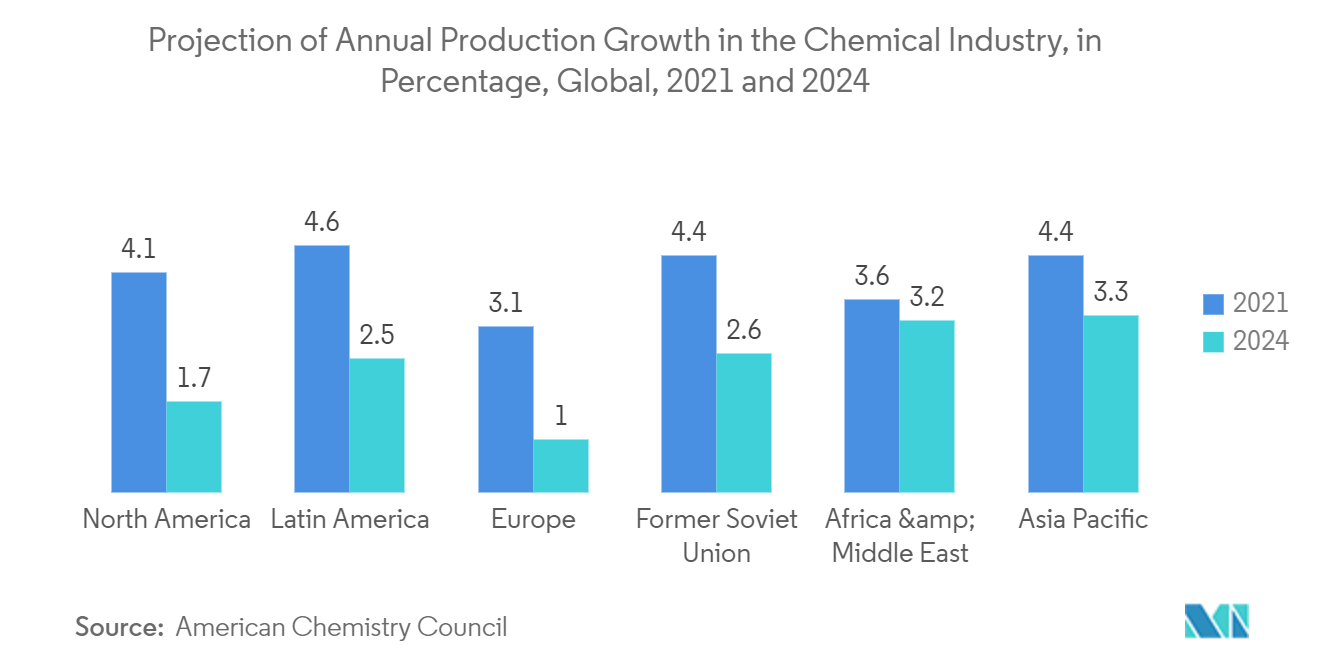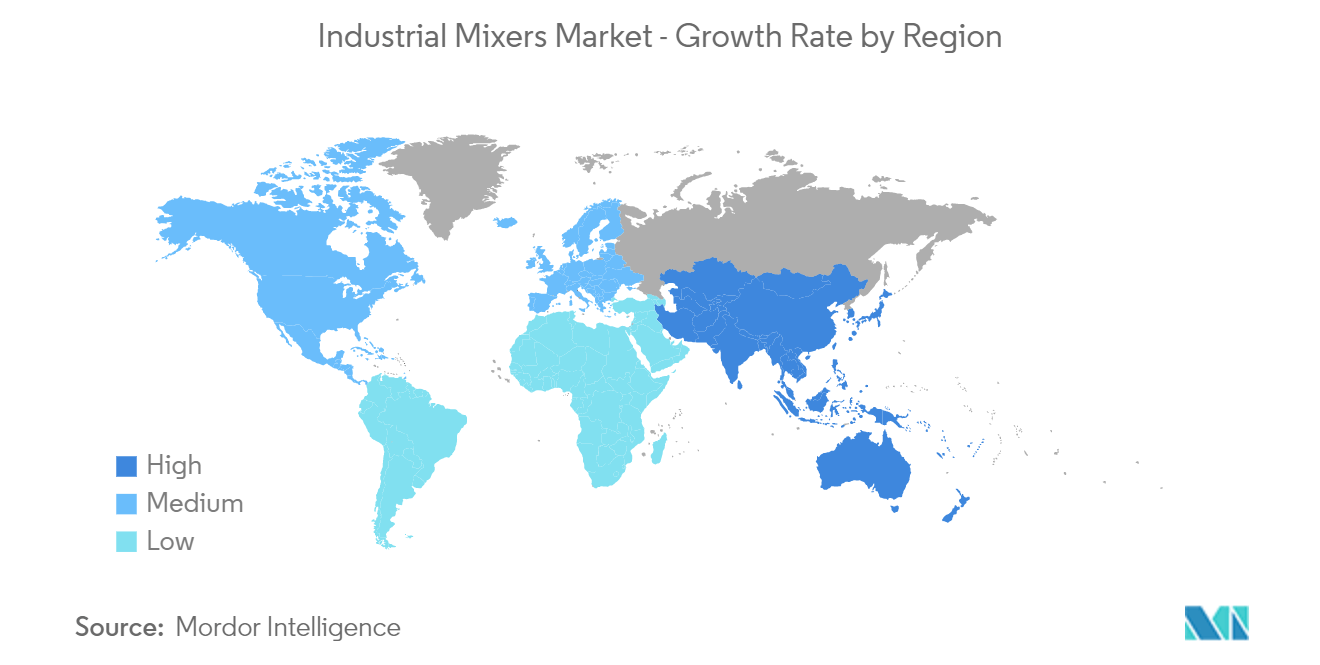Market Trends of Industrial Mixers Industry
This section covers the major market trends shaping the Industrial Mixers Market according to our research experts:
Chemical and Food and Beverage Industry to Drive the Market Growth
- The chemical industry prefers industrial mixers handling many products, such as high-viscosity fluids, abrasives, toxic materials, and corrosives. A high level of precision in mixing is significantly essential in chemical processes because, in the chemical industry, various kinds of reactants are used, which can undergo significant transformation even with minor changes in temperature, mixing speed, or mixing time.
- Further, according to the American Chemistry Council, the total global revenue of the chemical industry in 2021 stood at USD 4.73 trillion. The chemical industry's revenue reached its highest level in 15 years. Such improvements in the chemical industry will further drive market growth.
- Mixers are used in the chemical and pharmaceutical industries to combine various materials, such as hazardous chemicals and viscous fluids. These mixers are being used to reduce health risks and increase production rates.
- For instance, in June 2022, AGITEC launched a new range of Agitators for IBC. The AG-IBC product line has been completely redesigned to meet the needs of users who want to mix liquids stored in 1000L cubic tanks known as IBCs. These machines can mix liquids with viscosities of up to 8000 centipoise.
- Furthermore, Europe is the dominant market for food blenders and industrial mixers due to its large food processing industry. According to FoodDrinkEurope, the European food and beverage industry employs 4.57 million people. The food and beverage enterprise had a turnover of around USD 1.3 trillion and a value-added of USD 263 million. Furthermore, the beverage demand is high in Europe. All of these factors contribute to the growth of the regional market.

Asia-Pacific to hold the Largest Market Share
- Asia-Pacific has been demonstrating a significant growth rate for industrial mixers market vendors. Factors such as rapidly growing economies accelerate industrial mixers market growth in the region.
- Industrial mixer sales in China are anticipated to rise amid growing applications in the chemical industry and pharmaceutical industries. According to American Chemistry Council, Asia accounts for most of the global chemicals market. Since 2012, it has consistently accounted for more than 50% of the global chemicals market. Moreover, in November 2021, Indian Oil Corporation (IOCL) announced plans to invest INR 3,681 crores (USD 495.22 million) to set up India's first mega-scale maleic anhydride unit manufacturing high-value specialty chemicals at its Panipat Refinery in Haryana.
- As China's chemical and pharmaceutical industries are considered the world's largest, the sales in China's industrial mixer demand will surge at a rapid pace through 2022 & beyond. Further, according to Echemi, the Chinese pharmaceutical market size of RMB 1,922 billion in 2021 is projected to rise to RMB 223.11 billion in 2022.
- In addition, in June 2021, India's Finance Minister, Nirmala Sitharaman, announced an additional outlay of INR 197,000 crores (USD 26,578.3 million) to be utilized over five years for the pharmaceutical PLI strategy in 13 key sectors, including active pharmaceutical ingredients, drug intermediaries and critical starting materials. Such government initiatives in the pharmaceutical industry will further drive market growth for industrial mixers.
- Moreover, in September 2021, Dorf Ketal Chemicals India Pvt. Ltd and TriBonds Chemical Co. formed a joint venture (JV) to produce water specialty chemicals for use in the Middle East refining and petrochemical industries. The joint venture will meet the energy and water management and processing requirements of refineries, petrochemicals, fuel additives, plastics, lubricants, oil field chemicals, catalysts, and adsorbents.
- Further, the government has established a 2034 vision for the chemicals and petrochemicals sector to investigate opportunities to increase domestic production, reduce imports, and attract investment. The government intends to implement a production-link incentive system with output incentives ranging from 10% to 20% for the agrochemical sector and develop an end-to-end manufacturing ecosystem through cluster growth.


